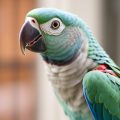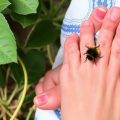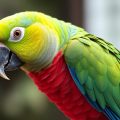Содержание
- What Is Feather Plucking?
- How to Spot Feather Plucking: Signs and Red Flags
- Common Causes of Feather Plucking
- How Vets Diagnose Feather Plucking
- Immediate Steps You Can Take at Home
- Treatment Approaches: Medical and Behavioral
- Tools and Aids That Can Help
- Diet and Nutrition: Why It Matters
- Monitoring Progress and Setting Expectations
- Case Examples: Learning from Real Situations
- Prevention Strategies
- When to Seek Urgent Veterinary Care
- Practical Checklist: Step-by-Step for Owners
- Resources and Support
- Final Thoughts on Patience, Compassion, and Persistence
SQLITE NOT INSTALLED
If you care for a parrot, cockatiel, cockatoo, or any feathered friend, nothing is more heartbreaking than discovering bald patches where soft down or colorful feathers used to be. Feather plucking is one of the most common and stressful problems bird owners face — and it’s also one of the most complex. It can be caused by illness, boredom, stress, hormonal changes, environmental factors, or a combination of these, and the path to recovery usually requires detective work, patience, and teamwork with a qualified avian veterinarian. This article will walk you step by step through how to spot feather plucking, how to think about its causes, what initial and long-term steps you can take at home, and when and how to seek professional help. I’ll keep the tone conversational and practical, so you can read this like a friendly coach standing beside you as you figure things out.
What Is Feather Plucking?
Feather plucking (also called feather picking or overpreening) is when a bird pulls out its own feathers or damages them so they fall out. It can be an occasional grooming overreach or a chronic, repetitive behavior. For some species, a little preening is normal — birds spend a lot of time grooming themselves — but plucking is different: it creates bare patches, broken feather quills, blood, or scabs, and it may be focused on certain body areas (like the chest or back) or generalized across the body.
Feather plucking is not a single problem with a single solution. Think of it as a final common pathway: many different triggers lead to the same visible result — missing feathers. That’s why a careful, systematic approach is essential. You can’t fix what you don’t diagnose, and many successful recoveries come from addressing several factors at once.
How to Spot Feather Plucking: Signs and Red Flags
The first step is recognizing feather plucking early, because the sooner you intervene, the better the bird’s chance of healing both feather-wise and psychologically.
- Visible bald patches or missing feathers in clusters
- Broken feather shafts or chewed ends of feathers
- Presence of blood, scabs, or raw skin
- Frequently removed feathers in or near the cage (or in the bird’s vicinity)
- Excessive preening or repetitive picking motions
- Feather ends that look cleanly cut vs. ragged — the former suggests cutting or other birds, the latter suggests plucking
- Changes in behavior: increased aggression, withdrawal, or loud vocalizations
- Fluffed feathers that stay fluffed as if the bird is chilled or sick
If you notice any of these signs, don’t panic. Your next actions should be calm and methodical: observe, document, and seek veterinary advice if the issue is new, severe, or accompanied by other symptoms (weight loss, discharge, lethargy).
Quick Observation Checklist
| Item | What to Look For | Why It Matters |
|---|---|---|
| Bald Spots | Location, size, whether skin looks irritated | Suggests plucking vs. natural molting |
| Broken Feathers | Are feathers chewed at the ends or cleanly cut? | Distinguishes plucking vs. grooming or other birds |
| Behavior | How often bird preens, when picking happens | Helps identify triggers (time of day, reactions to stimuli) |
| Environmental Changes | New pets, new people, recent moves | Stressors often precipitate plucking |
Common Causes of Feather Plucking
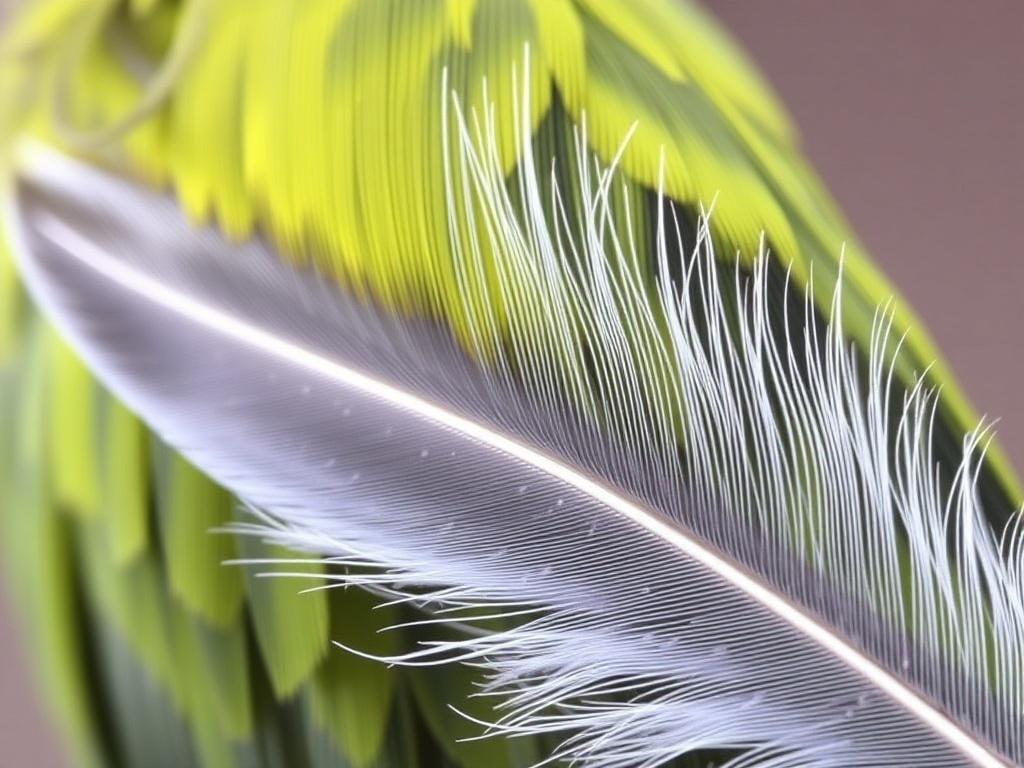
Understanding the possible causes is the heart of an effective treatment plan. Causes fall into broad categories: medical, behavioral, environmental, and social. Often several causes overlap.
Medical Causes
Medical issues are among the most important to rule out because untreated disease can worsen quickly. Common medical causes include:
- Skin infections (bacterial, fungal)
- Parasites (mites or other external parasites)
- Allergies or contact irritants
- Nutritional deficiencies (poor diet, vitamin/mineral imbalances)
- Hormonal disruptions (thyroid disease, endocrine issues)
- Pain or internal illness (kidney, liver, gastrointestinal problems)
- Chronic pain or discomfort in joints or internal organs can drive repetitive preening
A vet exam, bloodwork, fecal tests, skin samples, and sometimes radiographs are used to investigate these causes. Because many medical problems can be subtle, it’s wise to consult an avian veterinarian early in the process.
Behavioral Causes
Birds are clever and emotionally complex. Behavioral feather plucking often stems from:
- Boredom and lack of mental stimulation — parrots need active engagement
- Anxiety and stress — changes in environment, routine, or social dynamics
- Frustration from unmet needs (flight restriction, lack of foraging)
- Learned habits — once the behavior is repeated, it can self-perpetuate
- Attention-seeking — if plucking reliably brings comfort or attention, it can be reinforced
Fixing behavioral plucking typically involves environmental enrichment, training, and structured routines.
Environmental Causes
The bird’s physical environment matters a lot:
- Low humidity and dry air can make feathers brittle and skin itchy
- Household chemicals, heavy perfumes, or aerosols can irritate skin and respiratory systems
- Inadequate lighting or unnatural day/night cycles can disrupt hormones
- Dirty cages, rough perches, or cage layout that promotes boredom
Small changes in the environment can have outsized impacts.
Social Causes
Social dynamics — both human and avian — can influence plucking:
- Loneliness or lack of social interaction — many parrots crave company
- Too much or intrusive handling — can stress a bird and increase picking
- Dominant cage-mate or mate-related stress — birds living together may preen each other or get into stressful interactions
Identifying the social factor is key: some birds improve with more social structure; others need space.
How Vets Diagnose Feather Plucking
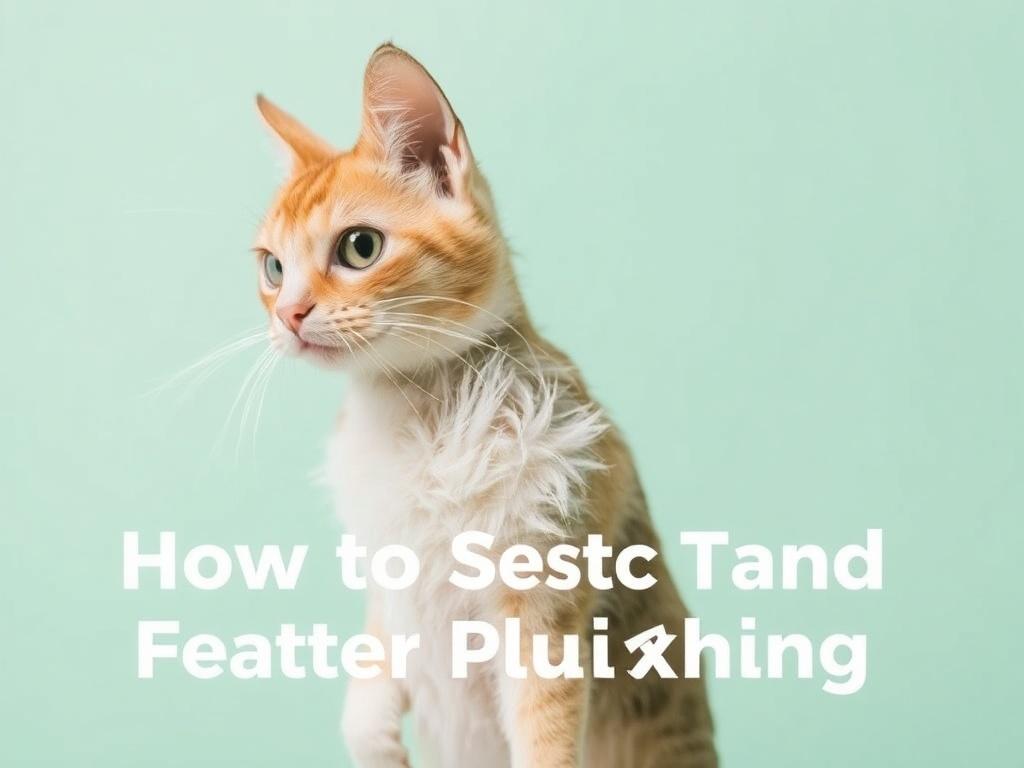
Because feather plucking can reflect medical disease, a proper diagnosis usually begins with a visit to an avian veterinarian. Expect a thorough history and physical exam.
- Detailed history: diet, daily routine, social interactions, onset and pattern of plucking, previous illnesses
- Physical exam: body condition, skin and feather inspection, checking for parasites
- Diagnostic tests: blood work (CBC, chemistry), fecal tests, skin/feather cultures, cytology
- Imaging: X-rays if internal disease is suspected
- Behavioral assessment: vet may ask to observe the bird or discuss video footage
Keep a log or video of the bird’s behavior — the time of day, what’s happening around the bird, and any patterns — this can be invaluable for the vet.
Immediate Steps You Can Take at Home
If you suspect feather plucking, some immediate, non-invasive steps can help while you arrange veterinary care:
- Document the problem: take clear photos of the affected areas and note any behavior you see.
- Keep the bird comfortable: maintain normal routine, avoid punishing the bird, and provide quiet reassurance.
- Avoid punishing or scolding — this increases stress and can worsen behavior.
- Check the environment for obvious irritants: strong smells, aerosols, smoke, or chemicals.
- Improve humidity: a room humidifier or regular misting can help dry skin.
- Offer foraging items and a variety of toys to reduce boredom.
- Keep the cage clean and provide a variety of perch sizes to avoid physical irritation.
These steps are supportive; they do not replace vet evaluation.
What Not to Do
Avoid these common, well-meaning but harmful actions:
- Do not try to restrain or forcibly trim feathers without vet guidance.
- Do not apply over-the-counter topical medications or creams meant for humans without veterinary approval.
- Do not abruptly change diet without consultation — sudden changes can cause stomach upsets.
- Do not isolate or punish the bird for plucking — it’s not purposeful misbehavior in the way people think of it.
Treatment Approaches: Medical and Behavioral
Successful treatment usually combines medical care (if there’s an underlying disease) and behavioral/environmental changes.
Medical Treatments (Veterinary-Guided)
If tests reveal infection, parasites, or systemic disease, a vet may prescribe:
- Antibiotics for bacterial infections
- Antifungals for fungal skin problems
- Anti-parasitic treatments for mites or lice
- Anti-inflammatory medications for painful conditions
- Hormonal therapy if endocrine disease is diagnosed
- Topical treatments or medicated sprays prescribed by the vet
Medication should always be administered under veterinary guidance. Never give poultry or human medications without approval — birds metabolize drugs differently.
Behavioral and Environmental Therapy
Behavioral therapy addresses boredom, stress, and learned habits. These are practical changes you can make at home:
- Enrichment: rotate toys, especially foraging toys that make the bird work for treats. Hide food in paper foraging cups or in cardboard tubes.
- Training: use short, positive training sessions (5–10 minutes several times a day) to build engagement and reduce idle time.
- Social scheduling: ensure consistent social time. Some birds do best with structured attention blocks rather than constant handling.
- Exercise: allow safe out-of-cage flight or supervised play time to burn energy and reduce stress.
- Environmental consistency: keep a stable, predictable routine for wake/sleep cycles and feeding times.
- Provide alternatives: safe chewable items (wood blocks, palm leaves) so the bird has something healthy to occupy its beak.
- Increase humidity and offer shallow baths or misting if your bird enjoys it; many birds preen less when feathers and skin are comfortable.
Patience is key: behavior change can take weeks to months, and relapses can happen.
Behavioral Tools Explained
- Foraging Toys: Encourage natural foraging by hiding treats. This reduces idle time and stimulates the brain.
- Target Training: Teach the bird to touch a small stick or your finger; it builds focus and creates a non-invasive interaction routine.
- Scheduled Interaction: Predictability reduces anxiety. Try consistent morning and evening interactions.
- Desensitization: If plucking is linked to fear of a certain stimulus (vacuum noise, another pet), slowly desensitize the bird under professional guidance.
Tools and Aids That Can Help
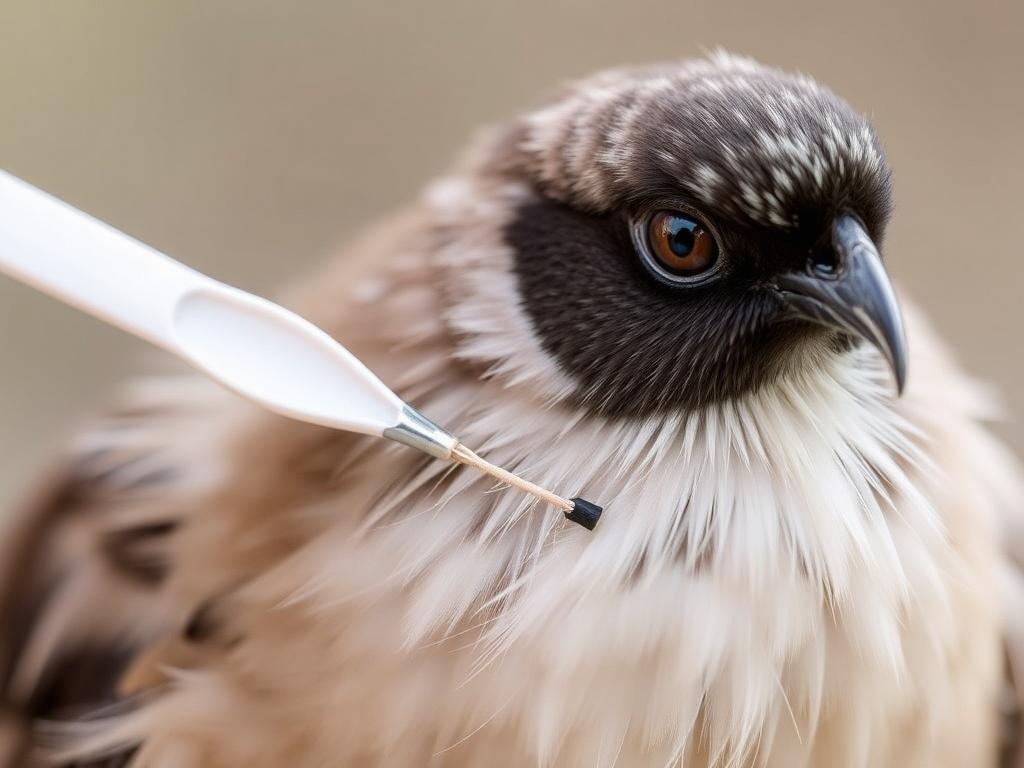
Some physical aids can protect healing skin and prevent further feather damage while the underlying problem is addressed. Use these under advice from your vet or an experienced behaviorist.
- Lightweight bird bodysuits or flight suits — they prevent access to the chest/back and can be calmer than collars
- Soft collars (if recommended) — many birds can become distressed by collars, so they’re not always ideal
- Talk therapy with an avian behaviorist — professional guidance for complex behavioral cases
- Environmental modifications like humidifiers, cage covers for quiet nighttime, and full-spectrum lighting to simulate natural day/night cycles
Diet and Nutrition: Why It Matters
Many feather problems are tied to nutrition. A poor diet can weaken feather growth and impair skin health.
- Base diet on a high-quality formulated pellet appropriate for your species — these are balanced and reduce the risks of selective feeding.
- Supplement with fresh fruits and vegetables daily. Leafy greens, carrots, and sweet potatoes are nutritious choices in moderation.
- Avoid diets based primarily on seeds — these are often fat-heavy and nutrient-poor.
- Ensure access to clean fresh water at all times.
- Discuss supplements with your vet — vitamins or omega-3 fatty acids may help, but unnecessary supplementation can be harmful.
A nutrition-focused vet evaluation can identify deficiencies and help create a long-term feeding plan that supports feather regrowth.
Monitoring Progress and Setting Expectations
Recovery from feather plucking is a process. Feathers grow slowly, and behavioral habits are resilient. Celebrate small wins.
- Keep a photo diary: take weekly photos to document regrowth and gauge improvement.
- Track behavior: note times when plucking happens and any triggers or improvements.
- Relapse is common: setbacks do not mean failure. Revisit the checklist with your vet or behaviorist.
- Timing: it can take months for feathers to regrow fully and even longer for behavioral patterns to shift.
Case Examples: Learning from Real Situations
Case 1 — The Bored Sun Conure: A middle-aged sun conure started plucking when its owner’s schedule changed and the bird was left alone more often. Solution: an avian vet ruled out medical issues; the owner added two daily 15-minute training sessions, rotating foraging toys, and a scheduled video call for social stimulation. Over months, plucking reduced and feathers began to regrow.
Case 2 — The Allergy and Mite Surprise: A cockatiel presented with raw skin under its wings. Diagnostic skin scrape revealed mites and secondary bacterial infection. Treatment: veterinary-prescribed anti-parasitic medication and topical therapy. The owner also improved cage hygiene and humidity. With treatment and supportive care, the bird healed and plucking stopped.
Case 3 — The Hormonal African Grey: An African grey plucked during mating season and targeted the chest area. The vet and behaviorist adjusted lighting to reduce long daylight hours, added neutral environmental cues, and increased enrichment. Over time, the bird’s hormonal drive lessened, and the plucking subsided.
These examples show that combining medical treatment, environmental change, and behavioral work is often the best path.
Prevention Strategies
Preventing feather plucking is easier than curing it. Build good routines and maintain a healthy environment.
- Provide a balanced diet from the start, not seeds as the exclusive food.
- Ensure daily mental and physical stimulation: toys, foraging, and training.
- Stick to a consistent sleep routine (10–12 hours of uninterrupted dark sleep for many parrots).
- Keep humidity at a bird-friendly level — many parrots do well with 40–60% humidity.
- Schedule regular wellness check-ups with an avian vet.
- Introduce changes gradually to reduce stress.
When to Seek Urgent Veterinary Care
Some signs require immediate attention:
- Open wounds, bleeding, or severe skin damage
- Rapid decline in appetite or weight loss
- Changes in droppings, breathing difficulty, or lethargy
- Any sign of systemic illness
If your bird shows these signs, contact your avian veterinarian right away.
What to Bring to the Vet
- Photos or videos showing the behavior and affected areas
- A detailed history: diet, household changes, other pets, and timeline
- Samples if requested (fresh feces, bedding from cage)
- Any current medications, supplements, or topical products used
Good documentation speeds diagnosis and leads to better care.
Practical Checklist: Step-by-Step for Owners
- Spotting: Notice a bald patch or frequent preening — document with photos.
- Immediate care: Make environment calm, remove irritants, maintain routine.
- Basic at-home fixes: Increase enrichment, improve humidity, rotate toys.
- Vet visit: Schedule an avian veterinary appointment for diagnosis.
- Follow vet plan: Provide medications and follow-up tests as guided.
- Parallel behavior plan: Start enrichment and training program alongside medical care.
- Monitor and record: Keep a photo and behavior diary weekly.
- Adjust long-term: Modify diet, lighting, and social schedule to prevent relapse.
Resources and Support
You don’t have to do this alone. Seek support from professionals and communities:
- Avian veterinarians — for diagnosis, treatment plan, and follow-up
- Certified avian behaviorists — for complex behavioral cases
- Local bird clubs and rescue organizations — they can offer experienced advice
- Reputable online forums and social groups — use selectively and verify any medical claims with a vet
- Books and courses on parrot behavior and enrichment — to build long-term knowledge
When in doubt, always verify advice with an avian vet; anecdote is not a substitute for diagnosis.
Table: Common Causes, Signs, and Typical Actions
| Cause | Typical Signs | Initial Actions |
|---|---|---|
| Parasites (mites) | Intense itching, flaky skin, feather loss focused on vent/wings | Vet skin scrape, anti-parasitic therapy, deep cage cleaning |
| Skin infection | Redness, scabs, sometimes foul odor | Veterinary culture, antibiotics/antifungals as needed |
| Boredom/Stress | Feather loss with no skin lesions, picks often during quiet times | Increase enrichment, exercise, and training; consult behaviorist |
| Allergic/Contact Irritant | Localized irritation where contact occurs | Remove irritant, vet evaluation, consider allergy testing |
| Nutritional Deficiency | Poor feather quality, slow regrowth, dull plumage | Adjust diet to pellets + fresh produce, vet-guided supplements |
| Hormonal/Chronic Disease | Seasonal or sustained plucking, other systemic signs | Full veterinary work-up, endocrine testing, medical management |
Final Thoughts on Patience, Compassion, and Persistence
Feather plucking can be emotional for owners. It’s normal to feel guilty or frustrated, but remember this: feather plucking is rarely willful misbehavior. It’s a symptom, and it often represents an effort by the bird to cope with discomfort or distress. The most successful recoveries combine kindness, steady care, and professional guidance. Be patient with yourself and your bird — persistent, thoughtful steps will often yield meaningful improvement over time.
Conclusion
Feather plucking is a complex, multi-causal issue that requires observation, compassion, and a two-pronged approach: rule out or treat medical problems with an avian veterinarian, and address behavioral and environmental triggers through enrichment, routine adjustments, and sometimes professional behavior help; with careful documentation, patience, and teamwork between owner and vet, most birds can see improvement and regain not only their feathers but also a better quality of life.


